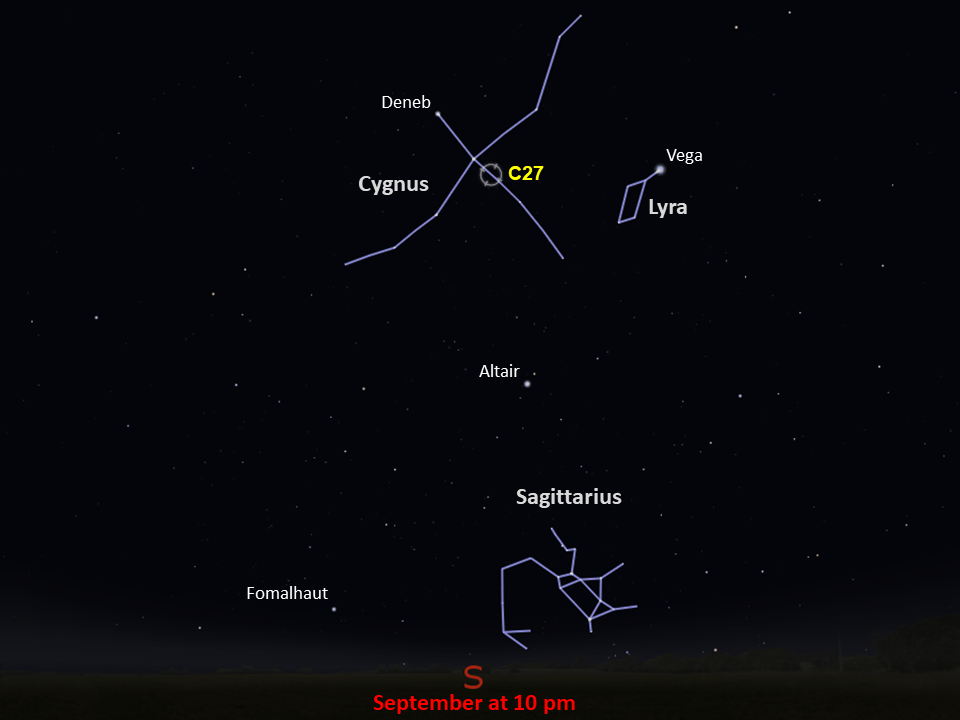Caldwell 27
Also called the Crescent Nebula or NGC 6888, Caldwell 27 holds a massive, incredibly hot star at its heart.
Distance
4,700 light-years
Apparent Magnitude
8.8
constellation
Cygnus
object type
Planetary Nebula
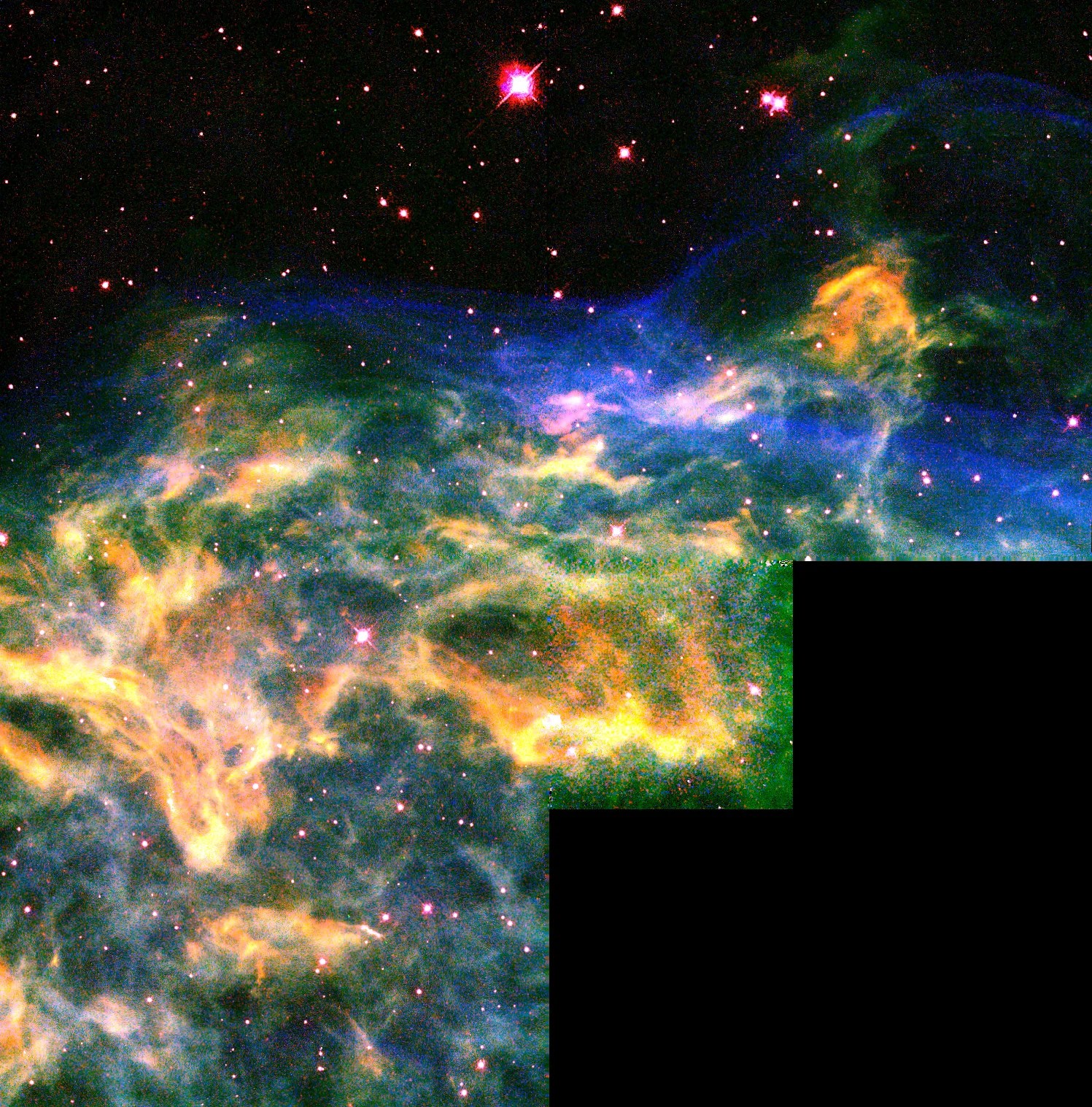
Also cataloged as NGC 6888 and nicknamed the Crescent Nebula, Caldwell 27 was discovered by William Herschel in 1792. This stellar demolition zone lies within our own galaxy, about 4,700 light-years from Earth in the constellation Cygnus, the Swan. With a magnitude of 8.8, the Crescent Nebula is not visible to the naked eye — but if it were, it would appear in the sky as an ellipse one-quarter the size of the full moon. In the future, the nebula’s shell may become compressed and begin glowing again, this time as a powerful blast wave moves outward from this Wolf-Rayet star (dubbed WR 136) when it completely destroys itself in a supernova explosion.
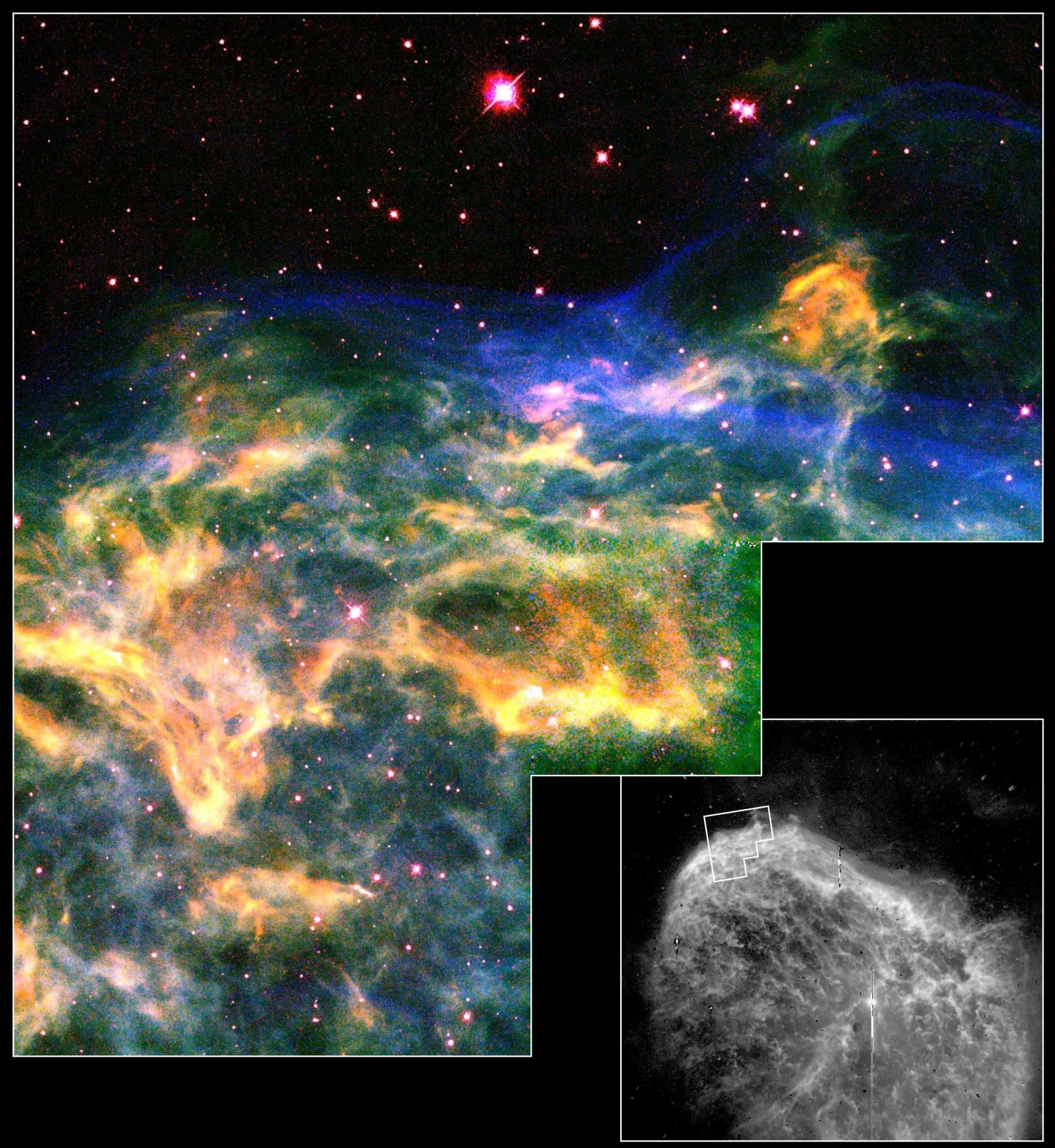
WR 136 created this web of luminous material during the late stages of its life. As a bloated, red supergiant, WR 136 puffed away some of its bulk, which then settled around it in a vast, roughly spherical cloud. When the star evolved from a supergiant to a Wolf-Rayet star, it developed an even fiercer stellar wind and began expelling mass at a furious rate. The stellar wind collided with the material around the star and swept it up into a thin shell. That shell broke apart into the network of bright clumps seen in the Hubble image.
Hubble’s sharp vision allows scientists to probe the intricate details of the complex system. Such details are crucial to understanding the life cycle of stars and their impact on the evolution of our galaxy. The observations were taken in June 1995 with Hubble’s Wide Field and Planetary Camera 2. Scientists selected the image’s colors to correspond with the ionization state of the gases (how many atoms have been lost or gained in the atoms of each gas), with blue representing the highest and red the lowest observed ionization.
For best viewing, observe Caldwell 27 with a moderate-to-large telescope equipped with a light-pollution filter during September.
For more information about Hubble’s observations of Caldwell 27, see:
Hubble Watches Star Tear Apart Its Neighborhood
Glossary
Ionization - The process by which particles become electrically charged; radiation from various astronomical sources, such as stars, can charge surrounding gases with electromagnetic radiation, causing these clouds of gas to glow.
Magnitude - The brightness of an astronomical object, represented by a number; bright objects have low numbers on the magnitude scale, while dim objects have high numbers.
Nebula - An interstellar cloud of dust and gas; either a location where new stars are being forged or a cloud of material ejected into space by a dying star.
Supernova - The explosion of a massive star at the end its life, which ejects material into space and causes the star to temporarily brighten in our sky.
Wolf-Rayet Star - A massive, incredibly hot star that blasts substantial winds of particles out into space and can shed mass equal to that of our Sun in just 100,000 years.
Explore Hubble's Caldwell Catalog
The following pages contain some of Hubble’s best images of Caldwell objects.
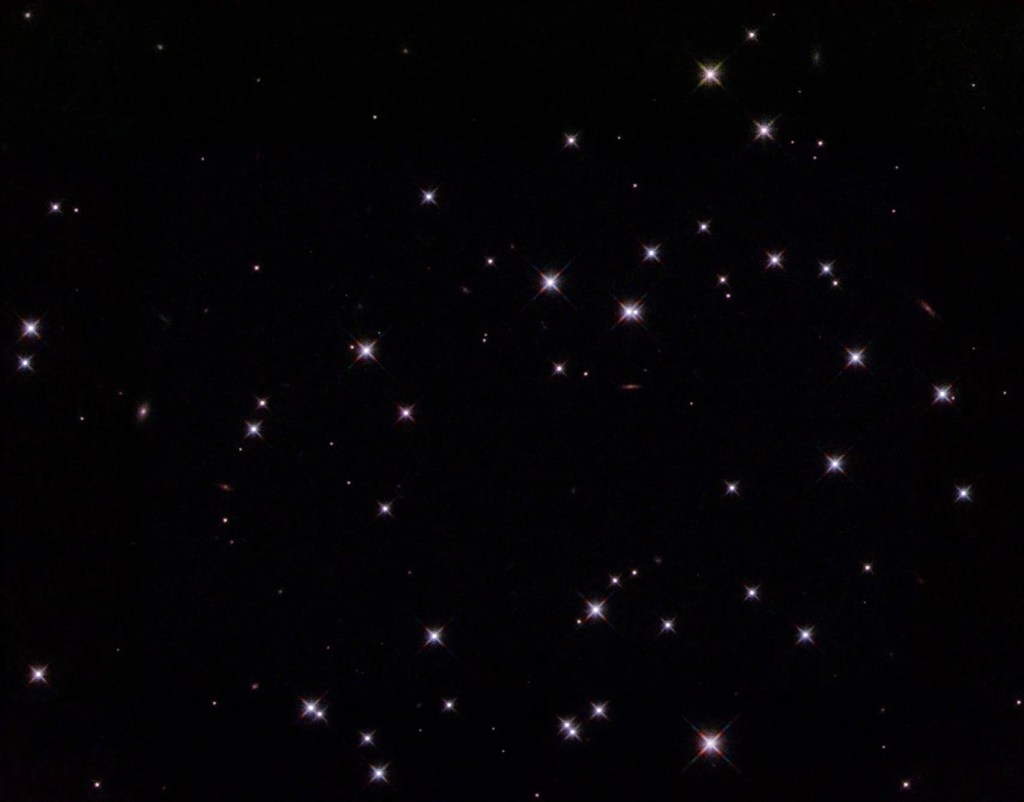
Also known as NGC 188, this group of stars formed from a large cloud of gas making the stars roughly…
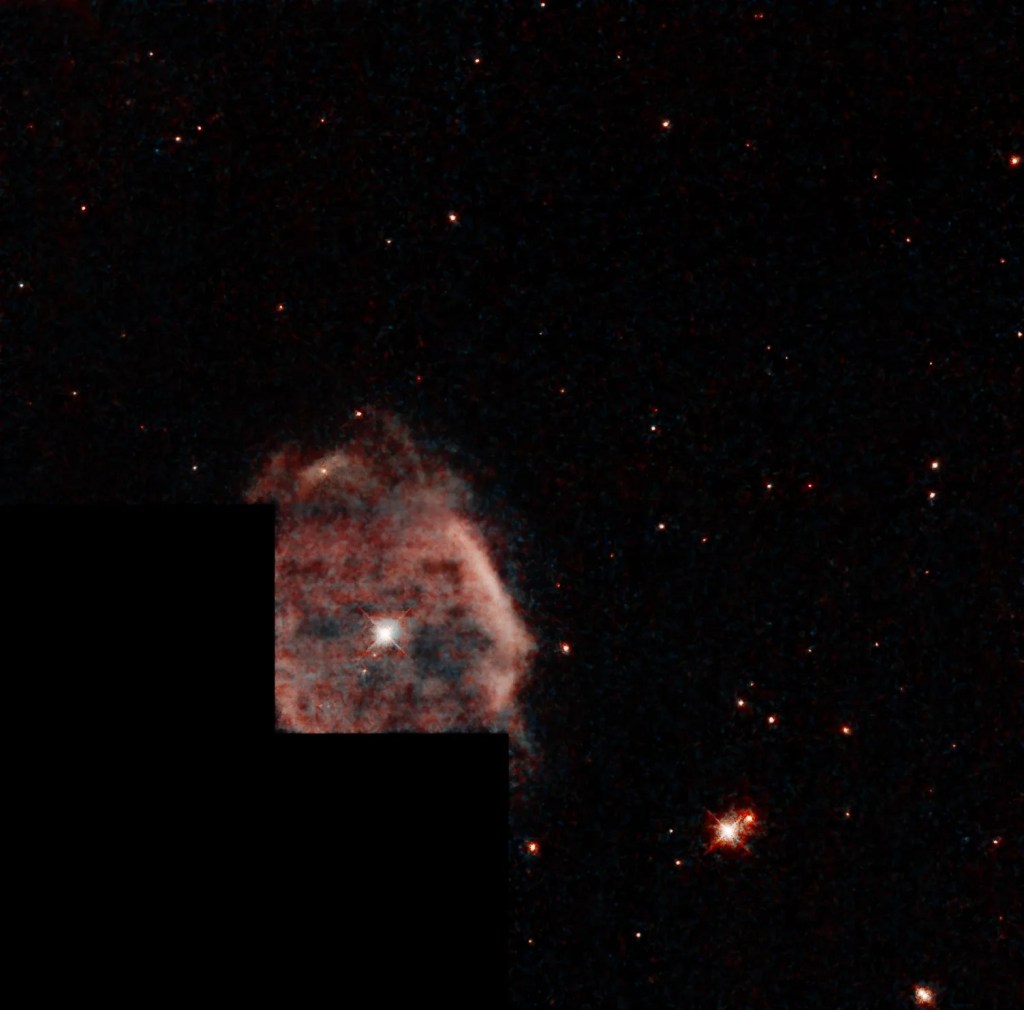
This shell of gas is expanding outward, away from the dying star within.
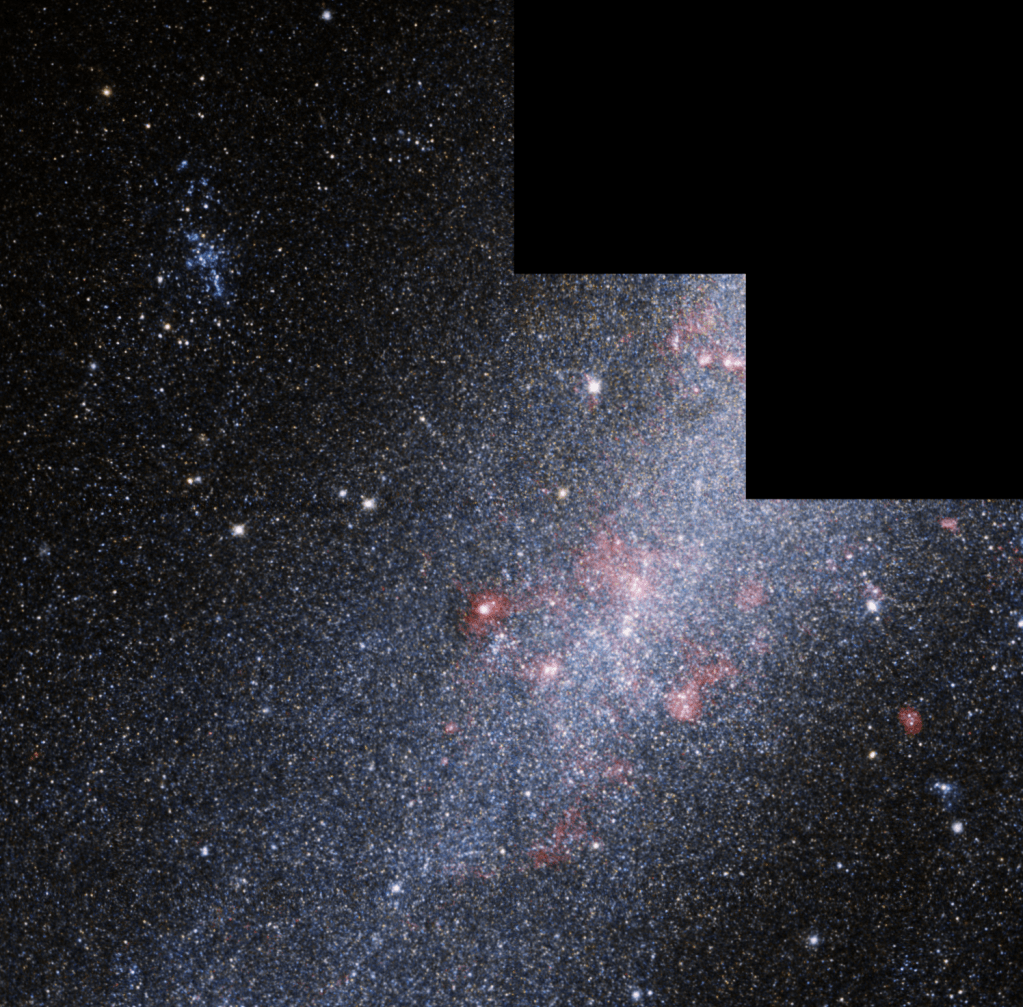
This barred spiral galaxy was first spotted by British astronomer William Herschel in April 1793 in the constellation Draco.





























